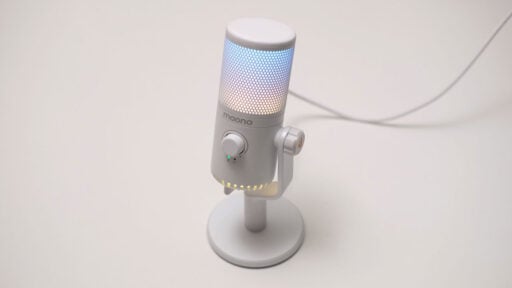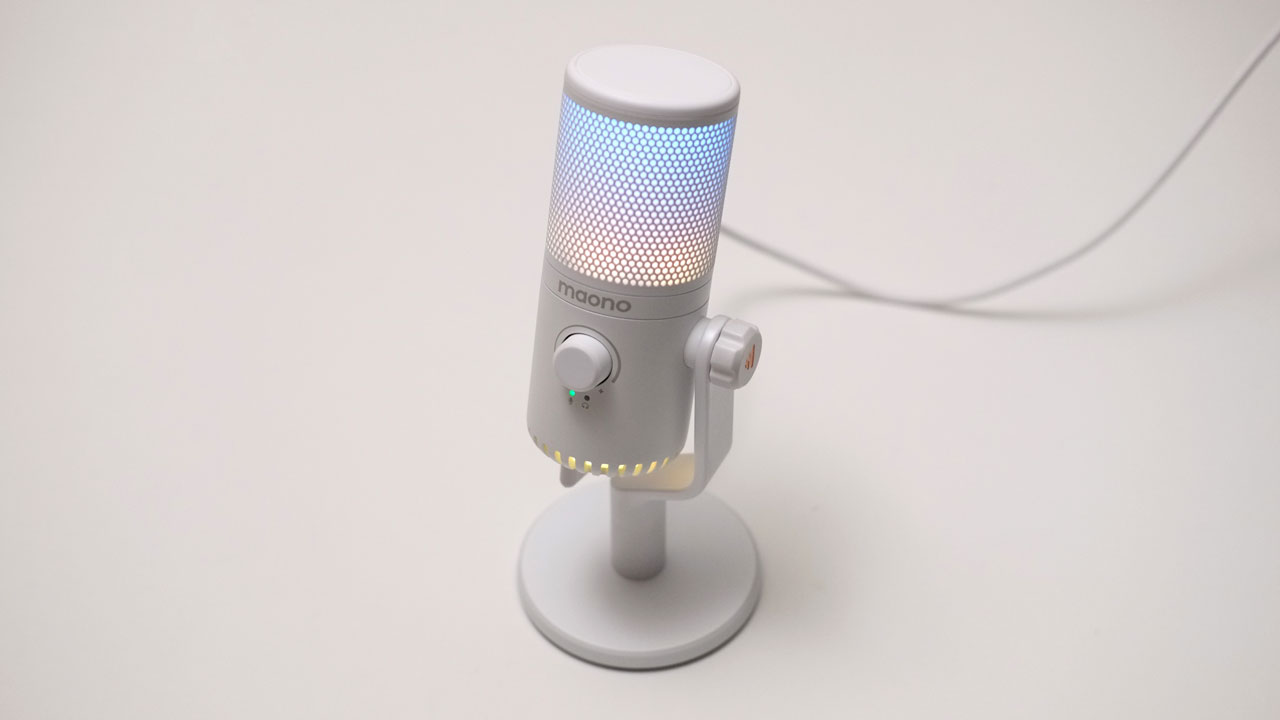What we have here for review is the MAONO DM30 RGB. This is a USB condenser microphone, featuring a price point of $49.99 USD at Amazon or about ₱2,790 PHP locally.
Disclosure: MAONO sent the DM30 RGB for the purpose of this review. The company did not ask me to say anything particular about it.
Table of Contents:
Technical Specifications
The DM30 RGB comes with controllable RGB lighting, a cardioid pattern and a USB interface – opening up a can full of features. That includes an ADC with a sampling rate of 24-bit and 48 kHz, USB Type-A or Type-C connectivity, and the MAONO Link software on top of its 3-in-1 knob.
| Microphone | |
|---|---|
| Transducer | Condenser |
| Polar Pattern | Cardioid |
| Frequency Response | 20-20,000 Hz |
| Impedance | N/A |
| Sensitivity | -4 dBFS (1 V/Pa at 1 kHz) |
| Connectivity | USB 2.0 |
| Dimensions | |
| Length | N/A |
| Width | N/A |
| Height | N/A |
| Weight | 513 g |
Packaging and Accessories
The DM30 RGB comes in a boxed packaging with a foam padding to keep the microphone safe from bumps and bruises.
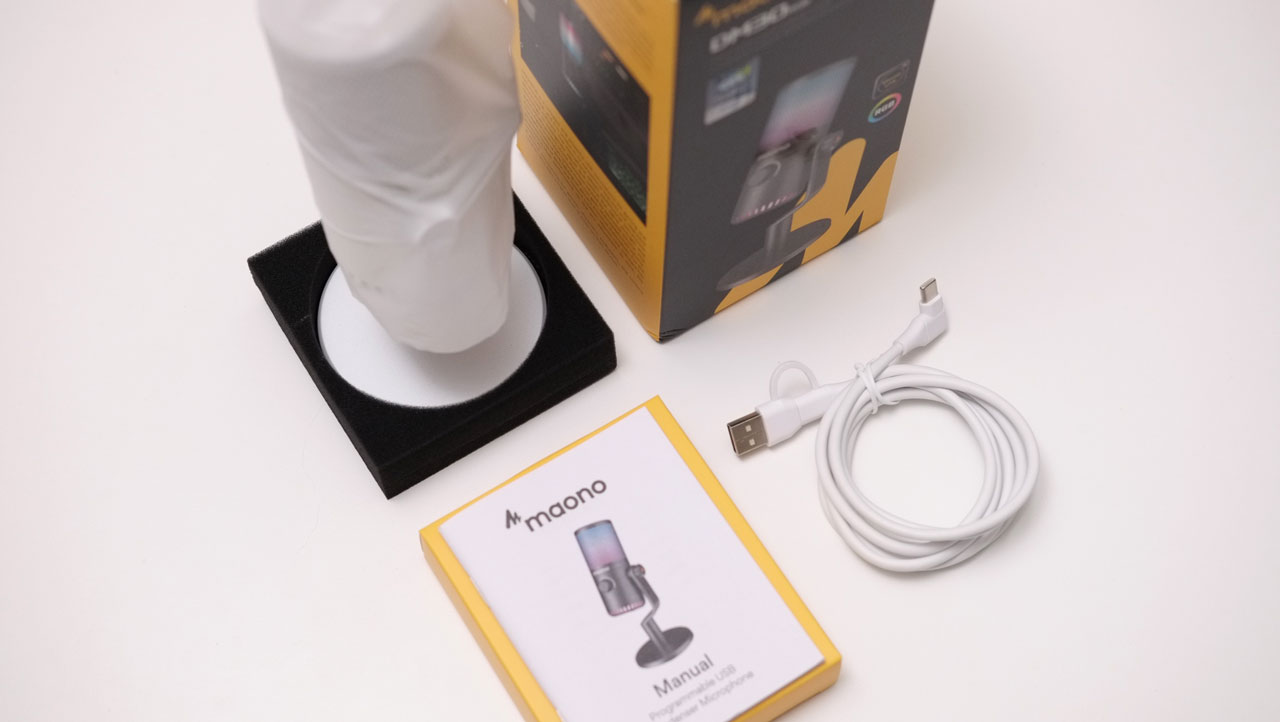
Scope of delivery are as follows:
- MAONO DM30 RGB Microphone
- USB Type-A to USB Type-A/C combo cable
- USB Type-A-F to USB Type-A-M charging cable
- Documentation(s)
I expected much or rather this less considering its price point.
Design, Build and Connectivity
The MAONO DM30 we got is again, the white variant. This is also available in Black, Pink and Purple but to be honest, White is where the money’s at – at least based on my preference for this particular model. It just looks elegant in this colorway.
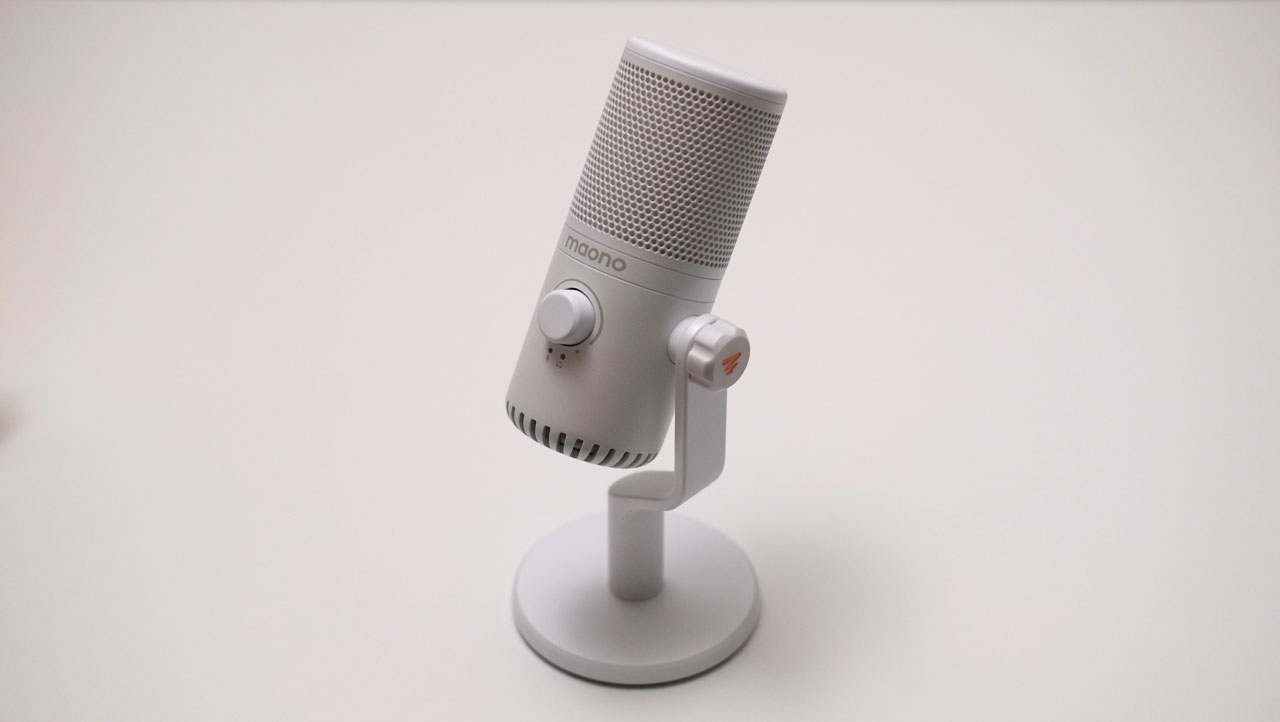
The MAONO D30 RGB looks like your typical condenser microphone which is pretty much true for most err… USB microphones. We have a metal basket here shielding the actual capsule itself along with what appears to be a quasi-pop-filter within. Anyway, up front is the control knob for both the input and output gain – along with a toggle for mute when you press it. Status LED indicators are present too.
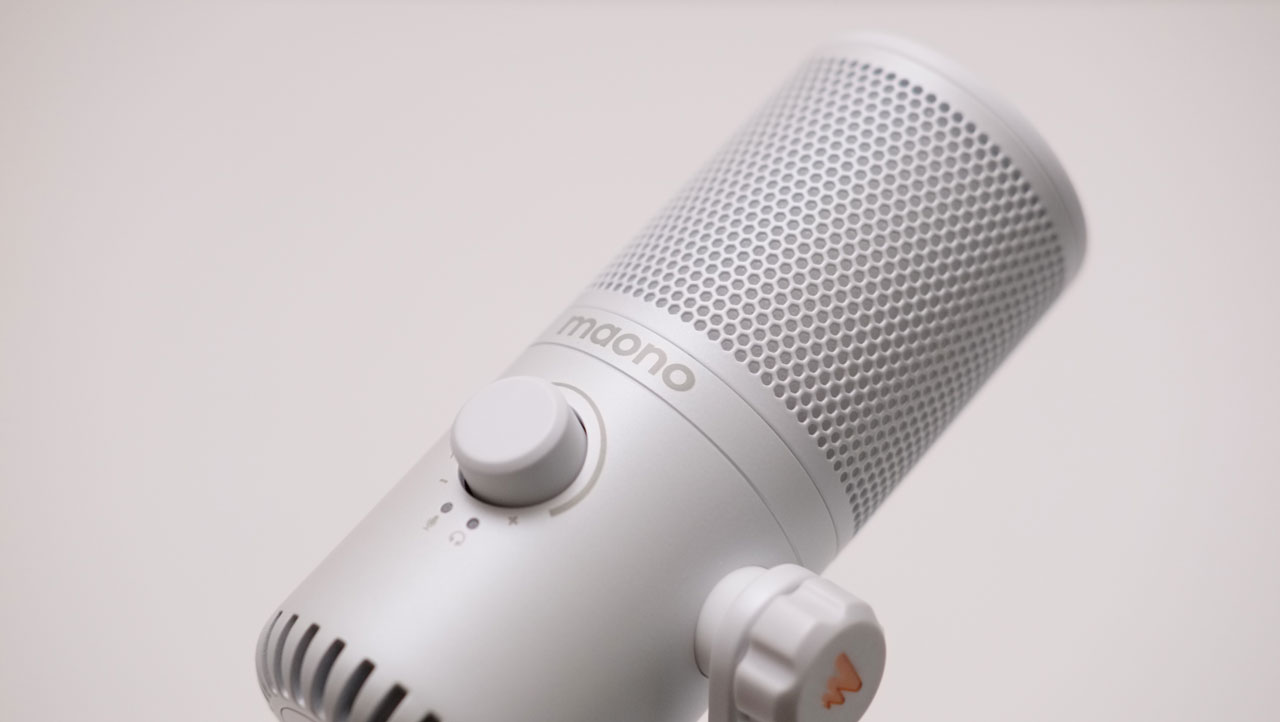
The bottom part of the microphone’s body houses the USB Type-C port that powers the whole thing. This side also houses the 3.5mm headphone jack for monitoring and the button for its RGB lighting.
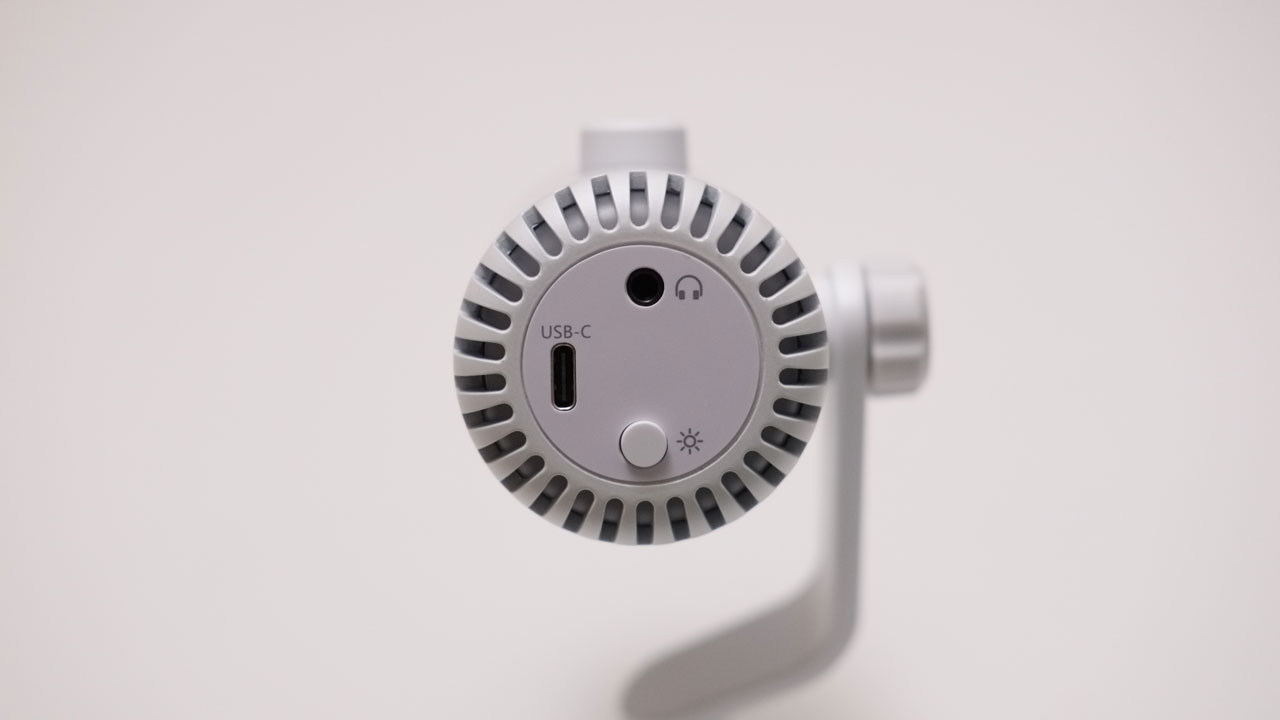
The DM30 RGB is compatible with microphone stands that offers a 5/8″ thread size. It is also shock-mountable which is true for most microphones that comes with a similar form factor.
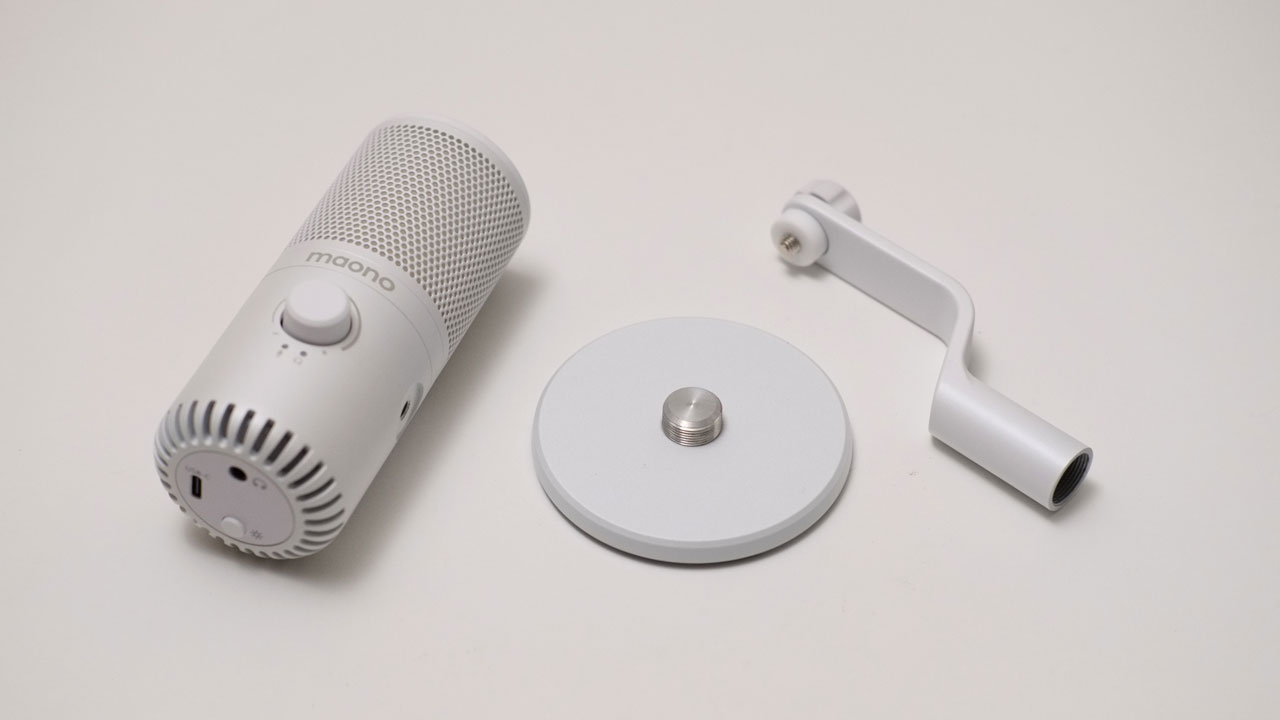
I have nothing to complain about the microphone except maybe for the weight of its capsule’s body. The base is actually the heaviest thing here which makes sense since it is made out of metal – aiding stability.
Ergonomics
The DM30 RGB is operated like your standard desktop USB microphone. You could tilt it, adjust its sideways and that’s about it.
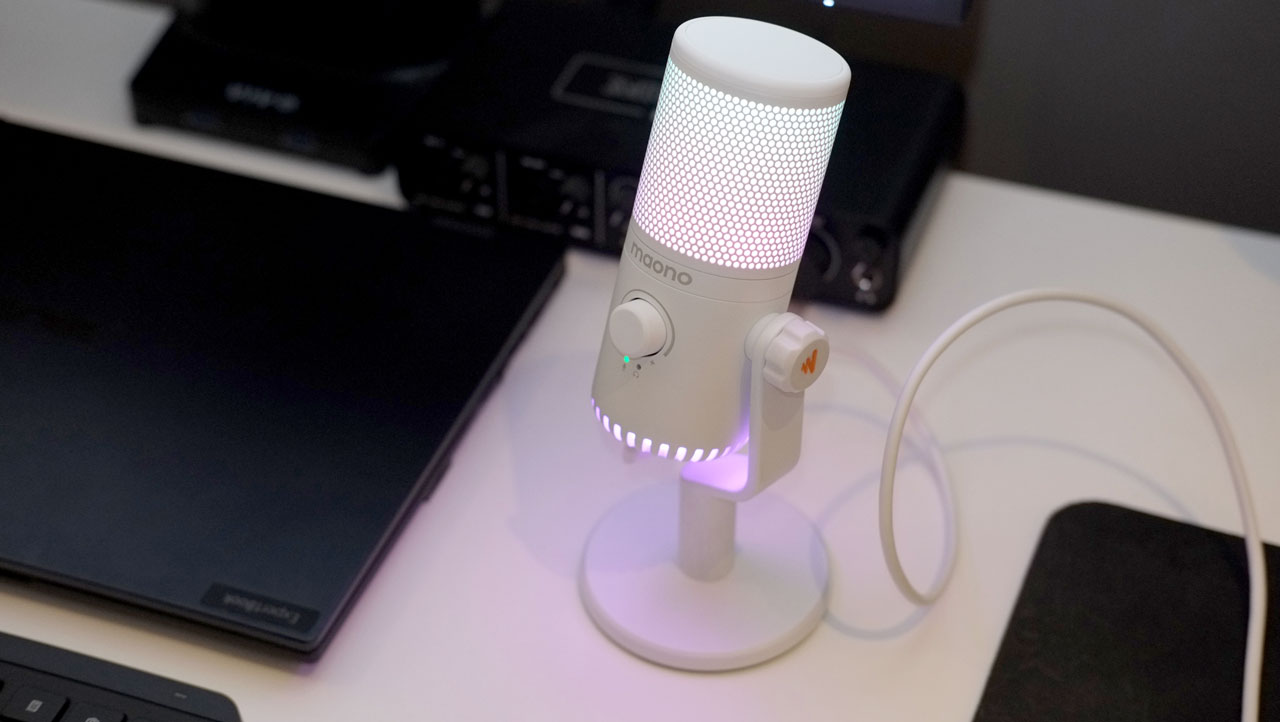
Again, it is compatible with 5/8″ mounts and should fit most shock-mounts so there are those options for a future upgrade in ergonomics.
Frequency Response
The DM30 RGB is a pleasant microphone to work with, featuring a decent bass roll-off that starts at around 100 Hz. Midrange is absolutely good on our measurements with minor dips and acceptable peaks. Finally, we got a bit of spiciness towards the upper midranges but it starts to roll-off quickly at around 5 kHz. Looking at MAONO’s datasheet, the microphone shouldn’t have deficiencies around the treble area but it certainly did. Psychoacoustics considered, this is somewhat in-line with the brand’s in-house measurements minus the treble’s irregularities.
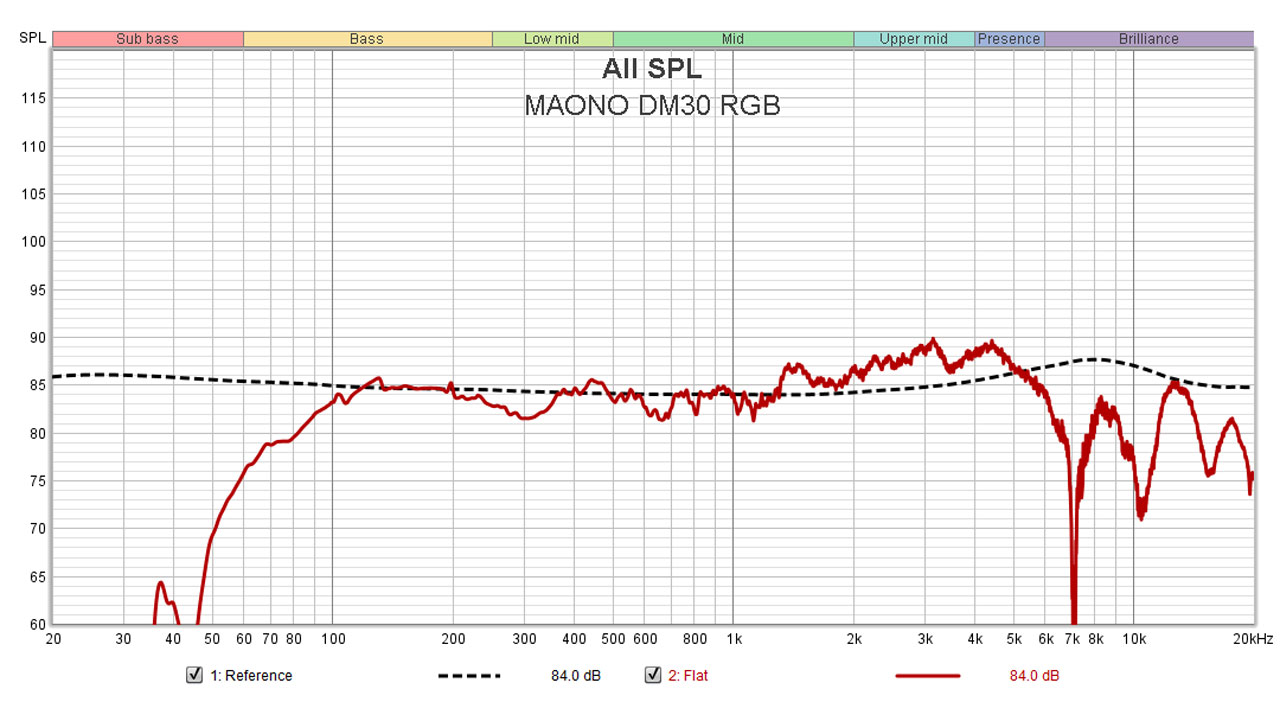
Looking at the filters, we could see that they are indeed working. I wish we have a low-pass filter here though to complete the gang.
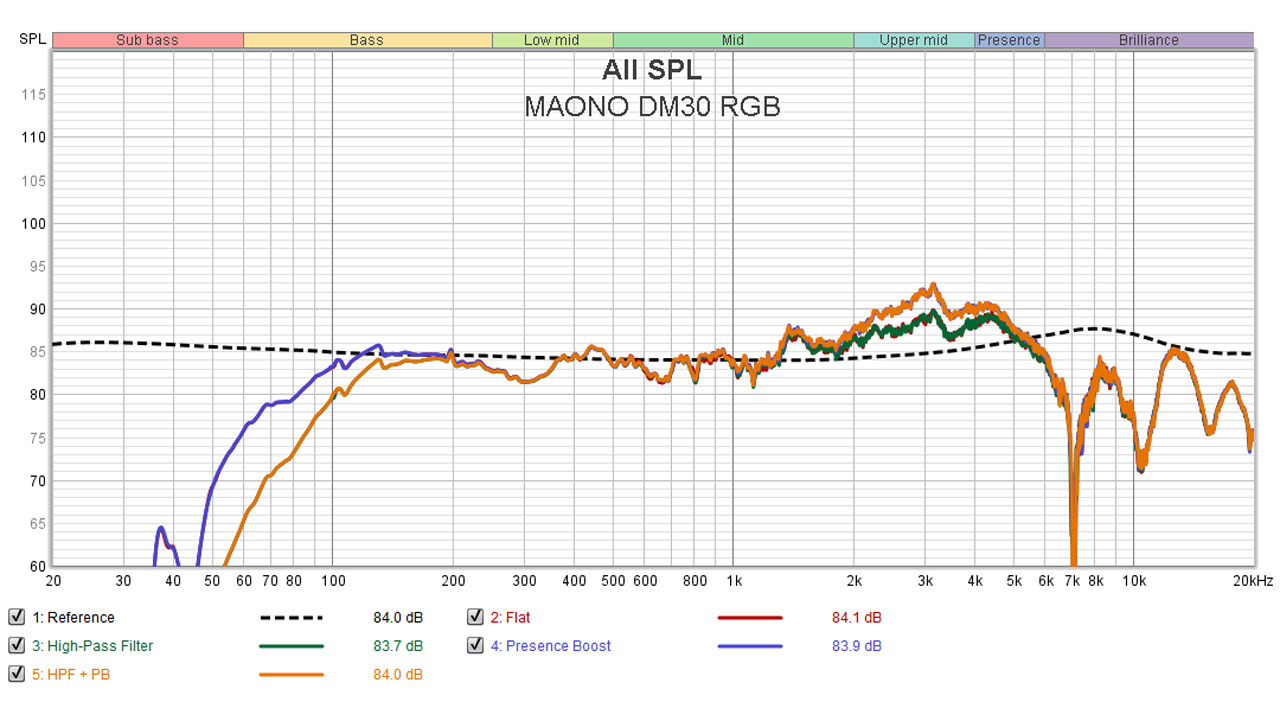
Presets are fun to play with but the changes here are actually not as drastic compared to the filters – but they do work regardless. If you have a deep voice and wants to dial it down a bit, the Natural and Bright presets may work out for you – and vice versa.
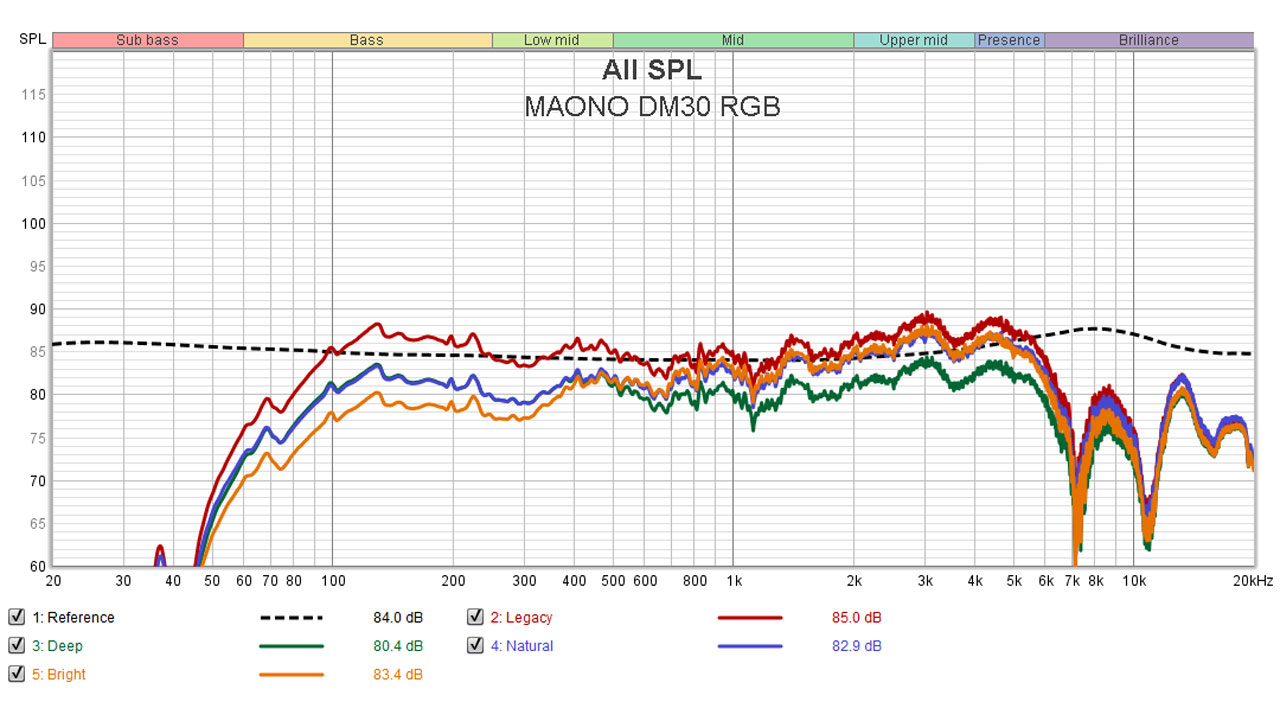
Everything considered, the DM30 lacks the necessary treble response for instruments such as drums and cymbals. The same could be said for its sub-bass or lack thereof. That said, you may want to exclusively use this for communication, light recording sessions and gaming (obviously) – but definitely not for serious studio related work. Its price class is evident so I will not discredit its performance further.
If you are interested to hear the microphone’s performance, you may check it out on our SoundCloud profile. That includes the microphone’s noise handling performance as well as the differences between each presets.
Directivity
MAONO markets the DM30 RGB as a condenser microphone with a cardioid pattern. That is somewhat true if we are going to cherry pick a few frequencies – i.e., 1 kHz as MAONO have tested. Looking at our own polar pattern test though, it actually resembles what a hyper-cardioid pattern would roughly look like.
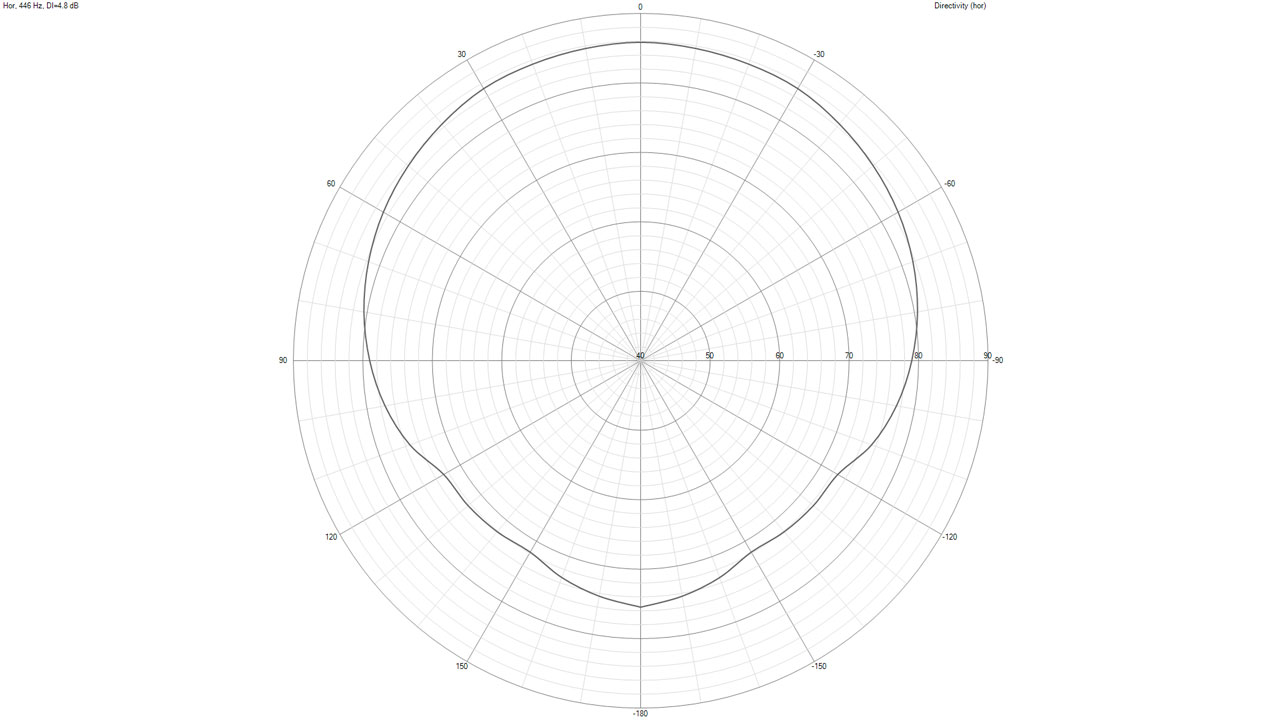
To further elaborate, this is what the results above looks like with a sweep. We could figure that the microphone has indeed lower energy levels as we change its horizontal directivity. You’d notice a change over the 90º mark but it picks up some bass and treble energy at 135º. These are responsible for the microphone’s actual polar pattern.
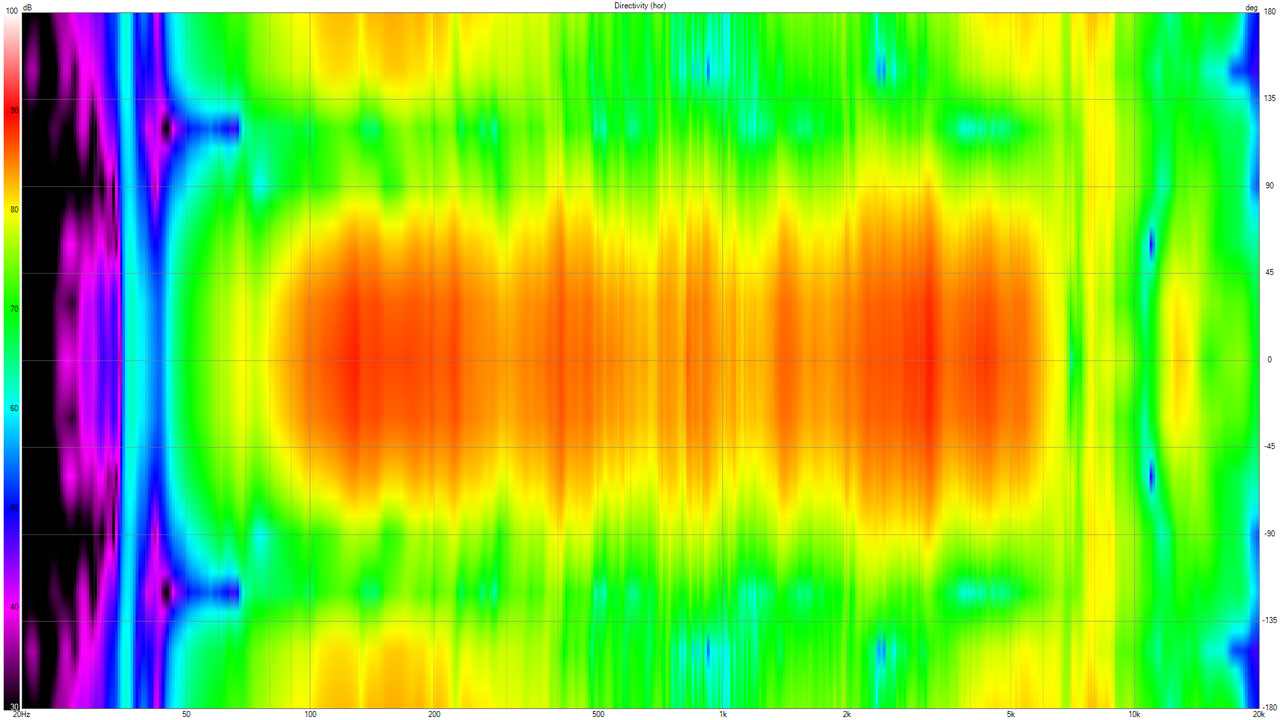
This pattern is evident on the noise handling sample we’ve provided. That said, I would recommend using any third-party noise-suppression technology as the MAONO Link unfortunately doesn’t come with such a feature.
Final Thoughts
The MAONO DM30 RGB USB condenser microphone presents itself as a feature-rich option in the market with a price point of $49.99 USD or just about ₱2,790 PHP locally. The microphone boasts controllable RGB lighting, a cardioid pattern (supposedly), and a USB interface, along with a sampling rate of 24-bit and 48 kHz. The whole package is well-designed in my opinion, ensuring a true plug and play operation.
Design-wise, the white variant of the DM30 RGB is praise worthy for its elegant appearance, featuring a metal basket shielding and a front control knob for the input and output gain, as well as a mute toggle. The microphone’s body includes a USB Type-C port, a 3.5mm headphone jack for monitoring, and a button for RGB lighting. The weight of the microphone is deceiving though as the capsule’s body is light, with the metal base providing most of its weight – aiding stability.
In terms of ergonomics, the microphone operates like a standard desktop USB microphone, offering compatibility with 5/8″ mounts and shock mounts for potential upgrades.
The frequency response of the DM30 RGB is generally pleasing, with a decent bass roll-off, good midrange, and some irregularities in the upper midranges and treble area. The microphone lacks the necessary response for instruments like drums and cymbals, making it more suitable for communication, light recording sessions, and gaming within its price class.
The directivity of the DM30 RGB is marketed as a cardioid microphone, but it shows characteristics closer to a hyper-cardioid pattern in actual polar pattern tests. While it exhibits lower energy levels in certain horizontal directivities, there are noticeable pickups in bass and treble energy at specific angles, contributing to the microphone’s actual polar pattern.
In summary, the MAONO DM30 RGB microphone offers a good set of features at an affordable price, making it a suitable choice for casual users engaged in communication, light recording, and gaming, though it may not be optimal for professional studio work due to its limitations in its frequency response.
MAONO DM30 RGB Microphone $49.99 USD

Product Name: DM30 RGB Microphone
Product Description: A real plug and play RGB gaming microphone specially designed for gamers, which can perfectly work with Maono-link software, and fit with three-in-one features controls for mute, microphone gain, and headphone volume.
Brand: MAONO
Summary
The MAONO DM30 RGB USB microphone, priced at $49.99 USD, offers a feature-rich option with controllable RGB lighting, a cardioid pattern, and a USB interface. Its elegant white design includes a metal basket and front control knob. While suitable for communication, light recording, and gaming, it may not be optimal for professional studio work due to limitations in its frequency response.
Pros
- Affordable price
- Controllable RGB lighting
- Good build quality
- Easy to use
- Good midrange performance
- 3-in-1 Control knob
- Includes Headphone Jack for monitoring
Cons
- Imbalanced weight distribution
- Limited treble and sub-bass response
- Needs third-party noise suppression
- Inconsistent directivity (more hyper-cardioid than cardioid)
